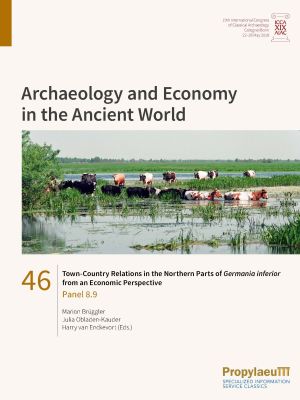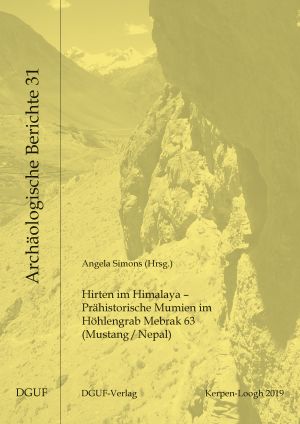Zerl, Tanja
Römische Landnutzung im antiken Industrierevier der Osteifel
From the beginning of the Roman Imperial period, the area between Mayen on the edge of the Eifel and Andernach on the Rhine experienced an enormous increase in its economic activity. In a short time, an industrial area developed there, from which wide areas in the Roman north-western provinces were supplied with high-quality basalt lava millstones, light tuff and later also heat-resistant ceramics. Quarries were newly established, land and water routes were expanded, existing outlets were extended and others were still to be developed. Setbacks in the 3rd and 4th centuries were followed by further booms.
How could the numerous workers and their families be fed, and what consequences did the success of the stone and energy-intensive pottery industries have for the environment? In order to clarify this, two Roman villas on the northern edge of the Mayen millstone quarries were investigated with geophysical measurements, excavations, geoarchaeological and botanical studies, and their entire surroundings were explored. The results are presented in this book. The inhabitants of the villa Mendig, »Im Winkel« were themselves involved in the production of millstones. In late antiquity, a surface drainage system there probably kept a transhipment point for millstones on the Segbach dry, while a fortified storage building ensured the supply of the quarrymen. Quarry owners resided in the villa Mendig, »Lungenkärchen«. It turned out to be an axial courtyard with an impressive water basin. Inspections led to the discovery of the burial ground belonging to »Lungenkärchen« with monuments made of Lorraine limestone as well as the discovery of a previously unknown vicus »Im Terl«.
Town-Country Relations in the Northern Parts of Germania inferior from an Economic Perspective: Panel 8.9
The province Germania inferior is an interesting candidate for investigating town-country relations. While its southern part borders on the distribution area of oppida, its northern parts had no Iron Age tradition of large settlement agglomerations. Nonetheless, in the Roman period towns were founded here: the Colonia Ulpia Traiana (Xanten) and the municipia Ulpia Noviomagus (Nijmegen) and Forum Hadriani/Municipium Aelium Cananefatium (Voorburg). An important economic agent of the time was the Roman army with its numerous forts along the Lower German Limes. These massive and new agglomerations of persons that were not primarily involved in food production must have posed a challenge to the supply of provisions – in food as well as other commodities.
This panel summarises and compares the town-country relationships in two civitates: the civitas Cugernorum with its capital Colonia Ulpia Traiana and the civitas Batavorum with its capital Municipium Ulpia Noviomagus. What supply strategies for the towns can be discerned? In what way did the primary centres influence the countryside? Are there differences between the civitates? Do they differ from those in the southern parts of Germania inferior? And if so, what are the reasons for it? Another focus are methodological questions, such as : with the data that we have, can we answer these questions? And if that is not the case, what other methods may be applied to gain a deeper insight into this aspect of Roman economy?
Hirten im Himalaya – Prähistorische Mumien im Höhlengrab Mebrak 63 (Mustang/Nepal)
This publication reports the results of the archaeological investigation of the prehistoric burial cave Mebrak 63 in Dzong valley, a high mountain valley in the Nepal Himalayas. 15 authors describe the excavation and present the interpretation of the complex archaeological findings and remains in ten chapters. In the appendix primary data are included: tables, the catalogue and plates of the archaeological finds.
Co-operation between archaeology and anthropology, textile archaeology, archaeo-botany and dendro-archaeology made it possible to reveal to a great extent the meaning of the prehistoric grave chamber and to come close to the people who were entombed in the collective burial cave in the last millennium before the Christian era. The analysis of the findings which, due to their preservation, are so far unique, provides insight into the way of life and the wide spread exchange and trade links of the prehistoric pastoralists.










